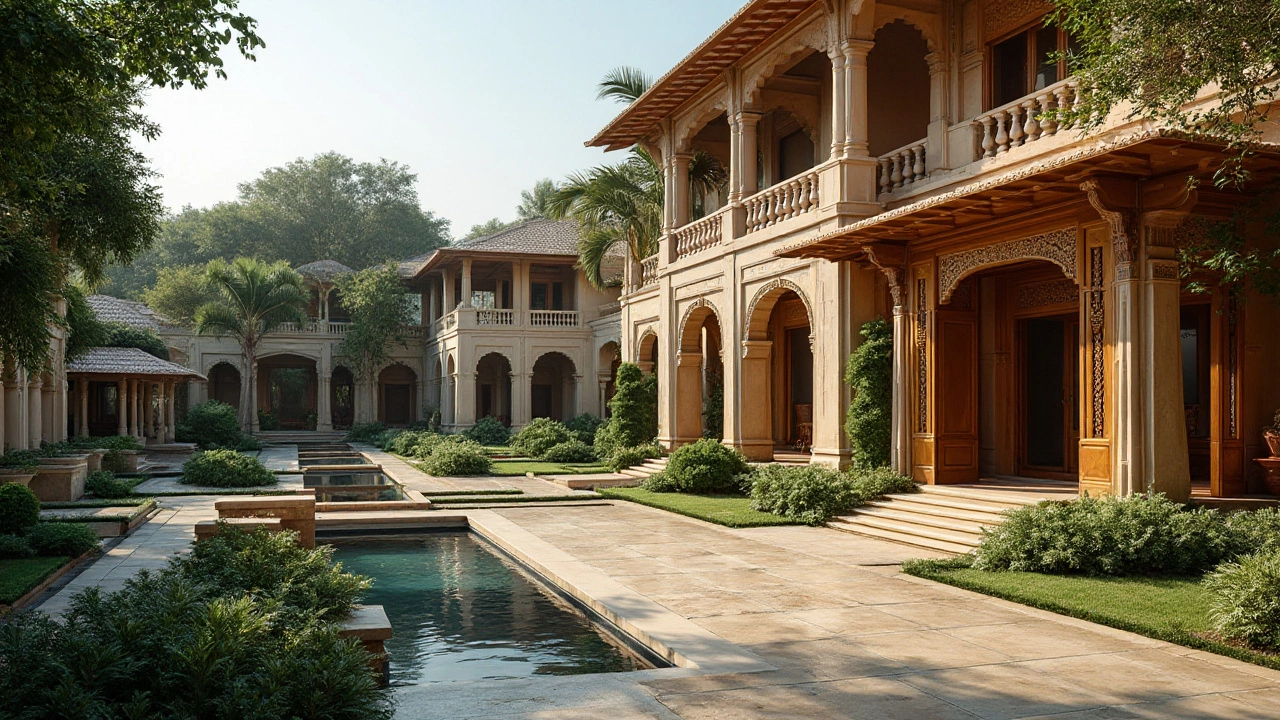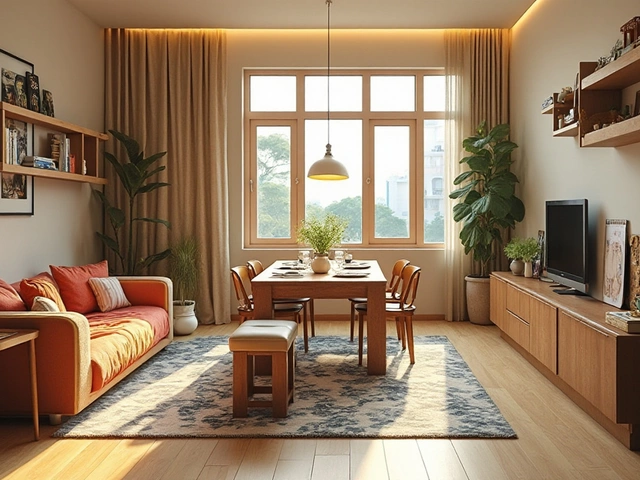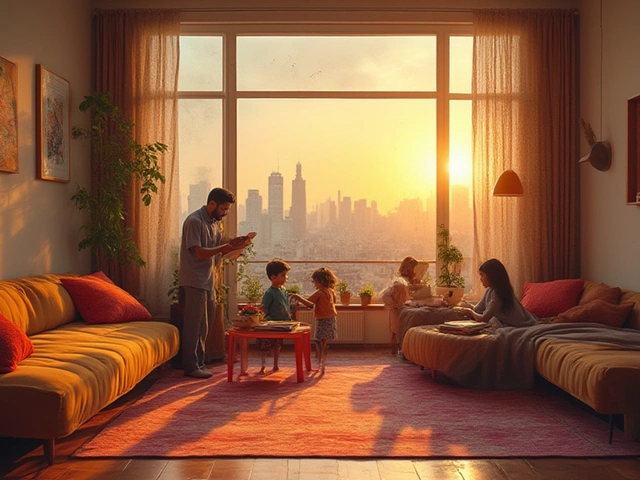When one thinks of a villa, images of grandeur, luxury, and expansive spaces likely come to mind. But what precisely defines a villa, and how does it stand out among other types of homes? While the modern interpretation of a villa often centers around opulent amenities and breathtaking architecture, its roots and significance stretch far back in history.
The word 'villa' originally referred to upper-class country houses in ancient Rome, complete with sprawling gardens and private living spaces designed for leisure and escape. In today's real estate market, villas continue to encapsulate that flair for lavish living, combining the beauty of natural surroundings with magnificent indoor environments.
Investing in a villa not only promises a plush living experience but also an opportunity to own a piece of heritage-style architecture that blends both comfort and prestige. Dive into the fascinating world of villas as we uncover their distinctive features, enduring legacy, and the unmatched lifestyle they offer.
- Defining Characteristics of a Villa
- Historical Evolution of Villas
- The Appeal and Benefits of Villas
- Tips for Buying a Villa
Defining Characteristics of a Villa
The allure of a villa is undeniable, offering a unique blend of fine living, architectural beauty, and an intimate connection with nature. At the core of what defines a villa are its distinct characteristics that set it apart from other homes. Typically, a villa boasts expansive square footage, often featuring multiple levels and a layout that emphasizes open spaces. This design not only offers ample room for living and entertainment but also enables a seamless flow between areas, creating a harmonious living experience that is a centerpiece of villa life.
One of the most striking features of a villa is its architectural design. With origins tracing back to the opulence of ancient Roman estates, modern villas carry this legacy through grand facades, elegant columns, and extensive use of glass and natural materials that invite the outside in. This blend of tradition and contemporary touches makes owning a villa an aesthetic triumph as well as a privilege. Villas often come with stunning views, whether they're nestled in picturesque countryside landscapes or located in breathtaking coastal regions.
The renowned architect Richard Neutra once said, "The house is the refuge of comfort. It is more than walls and a roof; it embodies freedom of expression and individuality."
Another defining aspect is the balance between privacy and community. Villas are usually located in exclusive areas or gated communities, ensuring privacy and security without completely isolating the inhabitants from society. This allows the residents to enjoy their own personal oasis while still being part of a larger community of like-minded individuals. In addition, villas frequently feature extensive outdoor living areas such as pools, gardens, and terraces, which are as integral to the villa's charm as its interior spaces. These outdoor areas not only enhance lifestyle but also provide a sanctuary for relaxation and leisure.
The integration of advanced technology and sustainability is increasingly becoming a standard characteristic of villas. Owners are prioritizing smart home features, energy-efficient designs, and eco-friendly materials to maximize comfort and reduce the environmental footprint. This shift towards sustainability not only aligns with modern values but also enhances the resale value and attractiveness of these properties. For instance, high-tech security systems and energy-efficient HVAC systems are often part of the package, catering to the discerning buyer's needs for both luxury and practicality.
It's worth noting that villas often come with a suite of luxurious amenities designed to enrich the lifestyle of their inhabitants. These can range from private gyms, home theaters, and wine cellars to spa-like bathrooms and gourmet kitchens equipped for both casual dining and entertainment. Such lavish amenities contribute to the villa's status as a symbol of wealth and a favored choice for those desiring a residence that can double as a venue for social gatherings.
In essence, what truly defines a villa is its promise of an exclusive lifestyle that marries the best of architectural elegance, luxurious comfort, and spacious living, all set against a backdrop that highlights the beauty of nature. Whether you're drawn by the history or the modern sophistication a villa offers, its unique attributes make it more than just a home—it's a destination in itself, often presenting an investment in both life quality and property value.
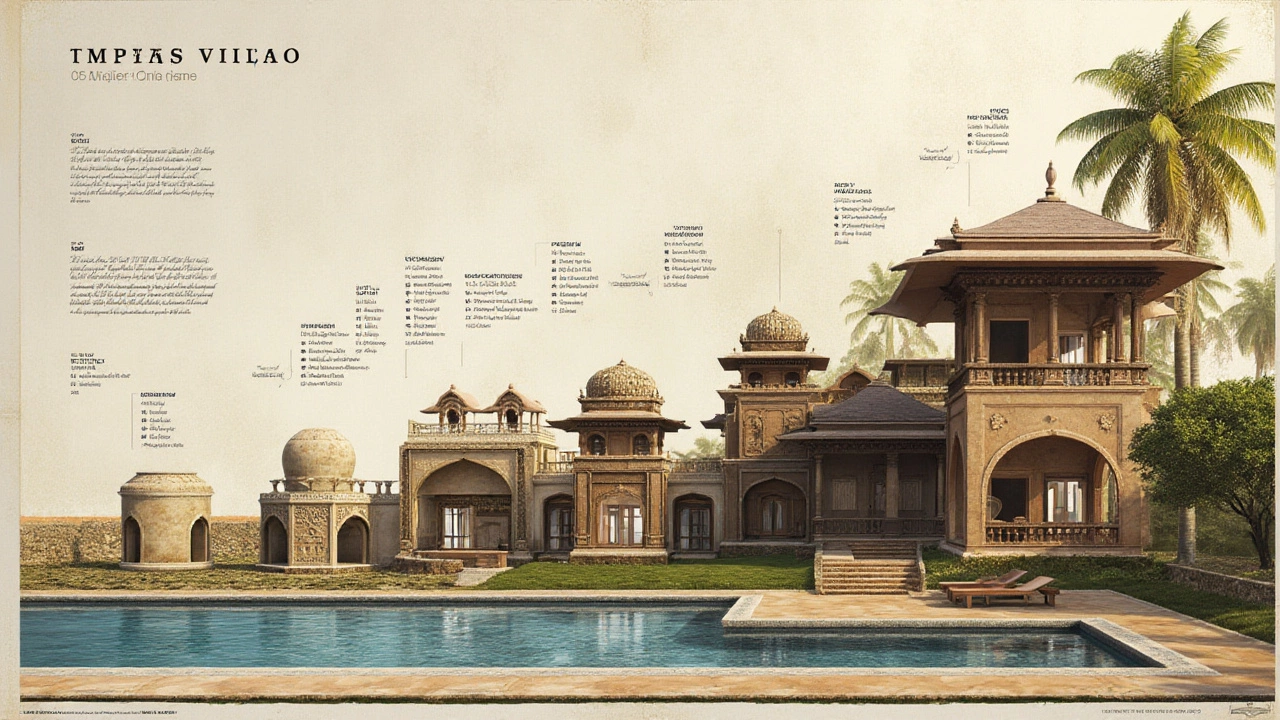
Historical Evolution of Villas
The concept of the villa has undergone a fascinating transformation over the centuries, echoing the cultural and social shifts of each era. The origins of villas trace back to ancient Rome, where they served as luxurious retreats for the Roman elite. These early villas were pastoral estates situated outside the bustling urban centers of the empire, designed to provide respite and leisure. They offered a stark contrast from the noise and rigor of city life, with architecture that emphasized relaxation and luxury. Roman villas were often adorned with elaborate frescoes, opulent courtyards, and thermal baths, reflecting the affluence and sophistication of their owners. The importance of these villas in ancient Roman society was not merely for relaxation but also as a symbol of power and status among the Roman patricians.
As history marched on, the villa concept began to evolve during the Renaissance period in Italy. This was an era distinguished by a rejuvenated interest in the arts, culture, and classical study, greatly informed by the past Roman ideals. During this time, villas became intellectual hubs for scholars and artists. They were designed meticulously with proportion, symmetry, and perspective in mind, often drawing inspiration from classical Roman architecture. The renowned architect Palladio revolutionized villa design during this era, setting the standard for what we recognize today as the Palladian style, characterized by grand columns, pediments, and harmonious ratios. A significant example of this architectural mastery is Villa Capra "La Rotonda", celebrated for its perfectly symmetrical square plan and breathtaking domed central hall.
Fast forward to the industrial revolution, the villa morphed yet again. The 19th century brought about a democratization of luxury living with the rise of the bourgeoisie. Villas were no longer exclusive to the aristocracy and began to populate the countryside, retreating from the soot and smog of industrial cities. This period saw the blending of technologies with tradition, as amenities like running water and electricity were introduced. The villa became a space that merged aesthetic beauty with modern functionality, setting the stage for contemporary luxury residences. "The villa has become a sanctuary, not only of physical comfort but of the evolving aspirations and dreams of its inhabitants," as noted by the architectural historian Paul Johnson.
"Villas represent a continuity of the human desire for escape and beauty, a testament to our unyielding pursuit of tranquility amidst the chaos,"
In the modern context, the term villa is used more broadly, often associated with luxury real estate around the globe, stretching from the sun-kissed coasts of Tuscany to the verdant hills of California. Today’s villas maintain a respect for their storied heritage while integrating cutting-edge design and technology to meet contemporary living standards. This evolution is not merely architectural but represents the adaptation of societal ideals and lifestyles. Each villa tells a unique story, a narrative written over generations that continues to evolve and captivate new homeowners and enthusiasts alike. The contemporary villa merges historical charm with modern luxury, offering a living experience that is both deeply rooted in history and strikingly futuristic.
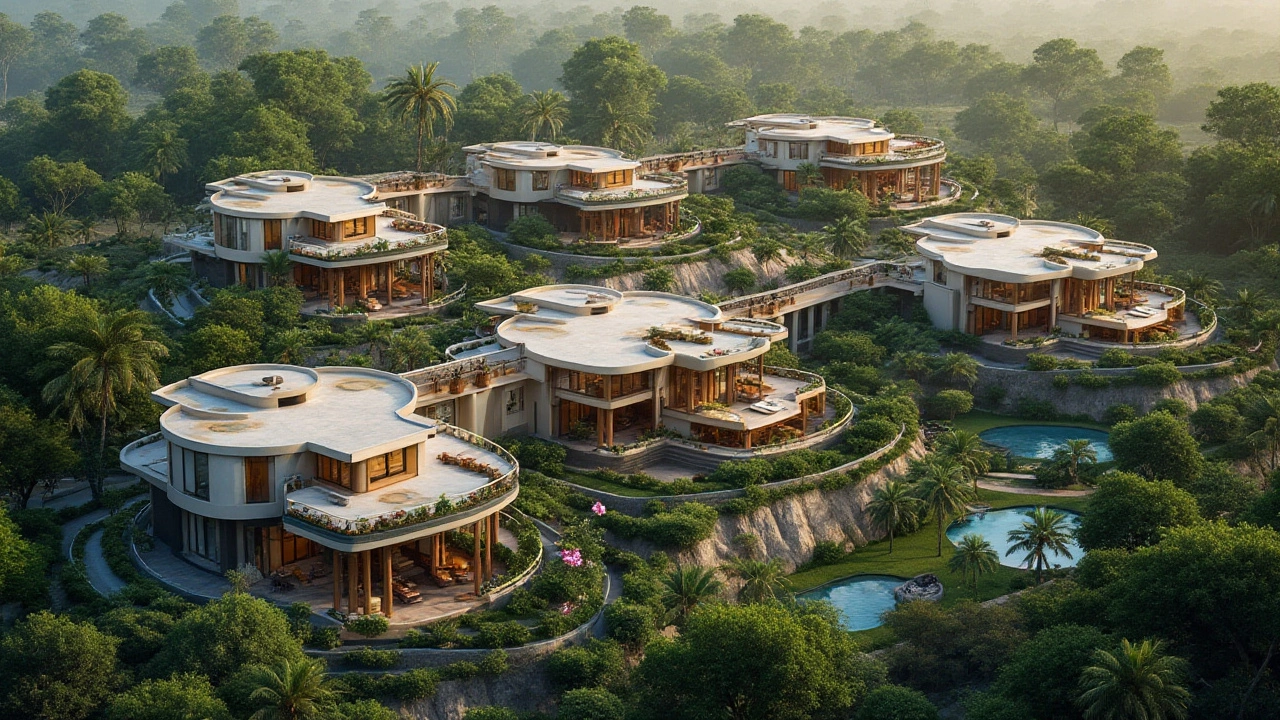
The Appeal and Benefits of Villas
The allure of owning a villa extends beyond mere aesthetics, diving into the realm of luxurious and exclusive living. Villas are synonymous with privacy, offering a retreat from the bustling world thanks to their expansive layouts and secluded locations. Typically set in idyllic environments, a villa provides the perfect balance between nature and modern living, often surrounded by lush gardens and scenic landscapes that promise tranquility and peace. This sanctuary-like setting is a crucial appeal for many, placing nature at the forefront of its design.
These luxurious homes also come with a promise of superior craftsmanship and sophisticated design, often featuring grand architectural details that showcase both elegance and luxury. This means high ceilings, large windows, and exquisite fixtures are standard fare. The villas cater to modern living needs with high-tech amenities and smart home features, demonstrating a seamless blend of tradition and technology. For those with a penchant for hosting, villas offer opulent entertaining spaces. From sprawling terraces to sophisticated dining rooms, each area is carefully designed to accommodate gatherings, whether it be intimate family dinners or grand soirées.
One cannot overlook the financial aspect of investing in prestigious real estate like a villa. Due to their limited availability and high demand, villas often have a strong resale value. This means that they are not just homes but are also valuable assets. As a real estate category, villas continue to appreciate over time, offering both a place to live and a rewarding investment opportunity. In fact, studies indicate that luxury properties, including villas, tend to provide significant returns over the long term.
For those seeking wellness and recreation, villas do not disappoint. With space to accommodate facilities such as private pools, gyms, and spa rooms, they cater to a wholesome lifestyle where comfort and relaxation are given utmost priority. This ensures that villa owners have everything they need within their property, minimizing the necessity to venture outside for leisure or fitness. As Jane Smith in the "Luxury Home Journal" aptly puts it,
"Owning a villa is not just about living in a beautiful house, it's about embracing an entire lifestyle of lavish comfort and convenience."
Moreover, villas can be customized to fit the unique preferences of their owners, offering unlimited possibilities for personalization. This enhances their charm further, making them not just a house but a reflection of personal taste and style. In summary, villas present a unique combination of elegance, privacy, and investment potential, making them a favored choice for many looking to elevate their living standards. This hybrid of beauty and practicality ensures that villas remain timeless in their appeal.
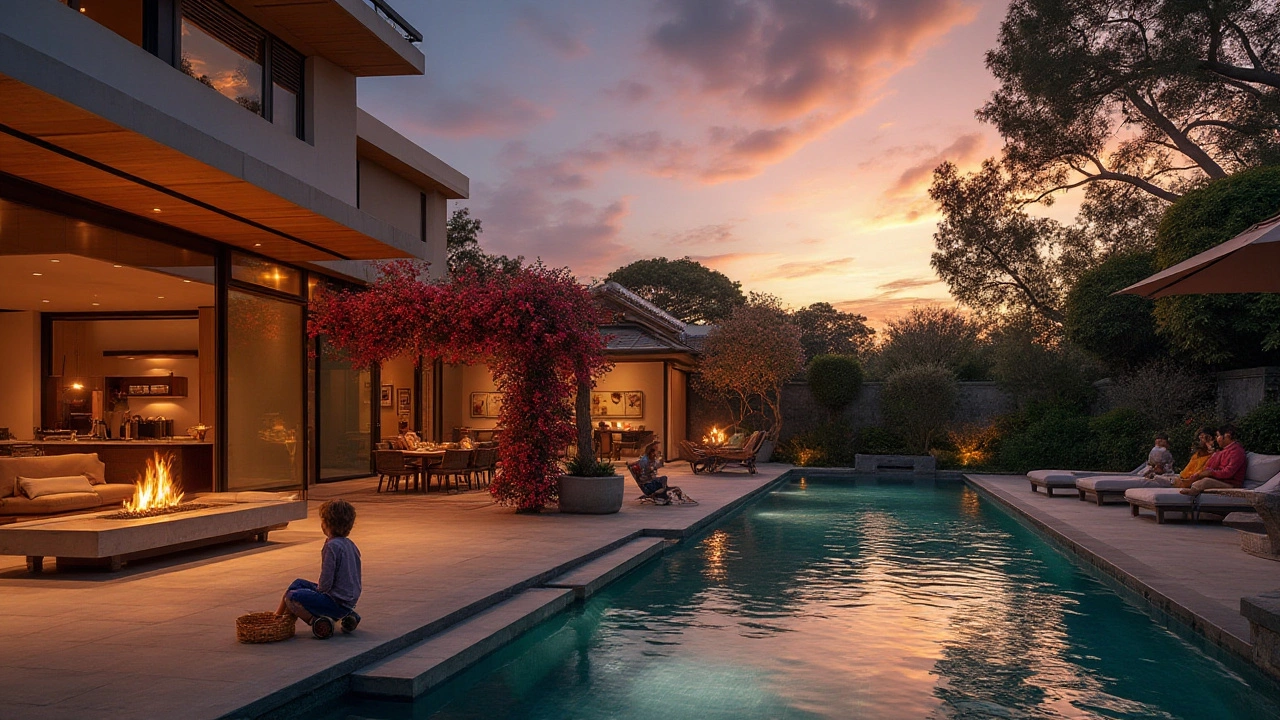
Tips for Buying a Villa
Purchasing a villa is an exciting venture that promises luxury and a truly unique lifestyle. However, the process requires careful planning and consideration due to the significant investment involved. To begin this journey, you should first determine what you want in your ideal villa. Do you prefer a newly built, modern-style villa with cutting-edge technology, or an older, more charming property with historical significance? Understanding your preferences will guide your search and ensure that you find a property that truly resonates with your desires.
Location is a critical factor when buying a villa, as it influences both your quality of life and the property's potential value. Villas typically offer serene surroundings away from the hustle and bustle of city life, so it's important to assess how this fits into your lifestyle. Consider the proximity to amenities such as markets, healthcare facilities, and schools, especially if it's a family residence. For investment purposes, research areas where property values are likely to increase. According to a study by John Burns Real Estate Consulting, properties in suburban areas have seen a rising demand, partly due to the post-pandemic shift in living preferences.
Another essential aspect is budgeting not only for the purchase price but also for associated expenses like property taxes, maintenance, and possible renovations. Villas often come with large gardens, swimming pools, or extensive grounds, all of which require upkeep. An experienced real estate agent specializing in villas can provide valuable insights into these costs. It's also advisable to engage a property inspector to ensure the villa is in good condition, and there are no hidden repair costs. As real estate author Dolf de Roos suggests, "An informed buyer is both cautious and optimistic, ensuring thorough examination today reaps benefits tomorrow."
Once you've identified a potential villa, a thorough inspection ensures you invest in a luxury home that truly meets your expectations. Renovations, especially in older villas, can escalate rapidly in cost, so it's important to have a clear understanding of their condition. This can often be overlooked, but details such as the structural integrity of the house, quality of the fittings, and the condition of auxiliary features like pools or tennis courts are crucial. Undertaking these steps diligently aids in avoiding unexpected surprises after purchase.
Finally, negotiating the price and terms with the seller is an art in itself. Be prepared to play the long game, as significant purchases like these often have room for negotiation. Understanding market trends and comparable property values can empower you during these discussions. An effective strategy is to have your finances pre-approved to demonstrate seriousness to sellers. A reputable agent can offer guidance here, as their expertise often results in a much better deal. Remember, finding the perfect real estate opportunity is about patience and persistence, ensuring you secure a villa that aligns perfectly with your dreams.
